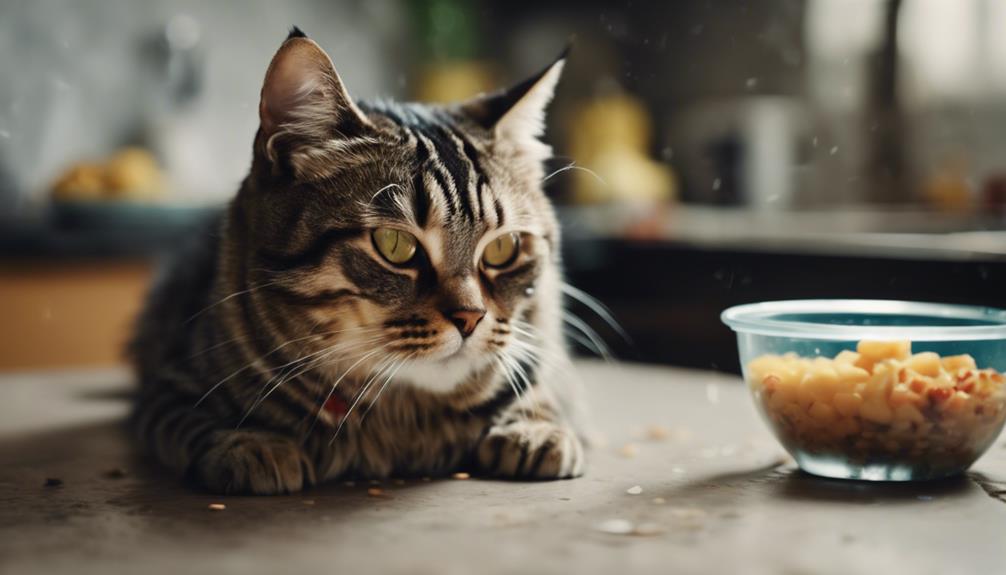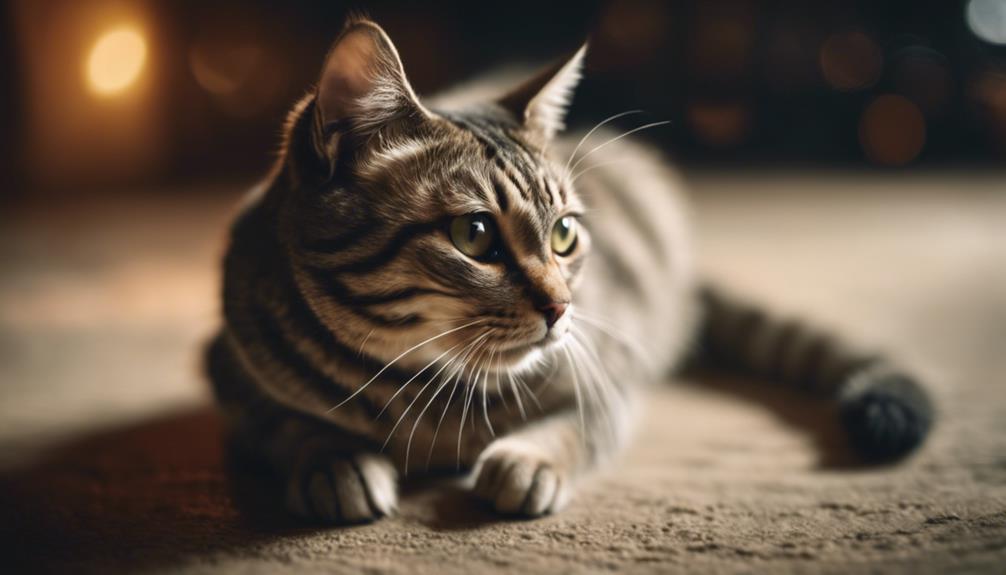Exploring the enigmatic world of cat drooling reveals a spectrum of potential causes that range from physical ailments to emotional turmoil.
The subtle yet telling behavior of drooling in felines can provide valuable insights into their well-being and state of mind.
From the complexities of medical conditions to the impact of stress and anxiety on our beloved companions, the reasons behind this seemingly innocuous act are as diverse as they are intriguing.
As we unravel the layers of feline drooling, each reason uncovered sheds light on the intricate interplay between health and emotions in our feline friends.
Key Takeaways
- Drooling in cats can signal medical issues like stomatitis or infections, requiring prompt veterinary attention.
- Foreign objects or unpleasant tastes can cause drooling, warranting immediate intervention to prevent complications.
- Anxiety, stress, and fear can trigger drooling, highlighting the need for a calm and secure environment.
- Identifying and addressing the underlying cause of drooling is crucial for improving the cat's well-being and health.
Medical Issues and Pain
When it comes to understanding the reasons behind cat drooling, delving into the realm of medical issues and potential pain is crucial. Cats may drool excessively due to various medical conditions such as stomatitis, mouth inflammation, infections, gum disease, or abscessed teeth. These issues can cause discomfort and lead to increased saliva production in cats.
If your feline companion is exhibiting unusual drooling behavior, it is essential to consult a veterinarian promptly for a proper diagnosis and treatment plan. Addressing any underlying medical problems promptly can help alleviate your cat's discomfort and improve their overall well-being.
Regular dental check-ups and proper oral hygiene are also vital in preventing such medical issues that may contribute to excessive drooling in cats.
Foreign Objects in Throat
Foreign objects lodged in a cat's throat can lead to excessive drooling and potential health risks if not promptly addressed by a veterinarian. Cats are curious creatures that may ingest items such as small toys, strings, or bones that can get stuck in their throat or esophagus.
When a foreign object obstructs the airway or causes discomfort, it can trigger excessive drooling as a natural response. In some cases, the object may cause injury or lead to choking if not removed promptly. If you suspect that your cat has ingested a foreign object and is drooling excessively, it is crucial to seek veterinary advice immediately.
Prompt intervention can prevent complications and ensure your cat's well-being.
Unpleasant Taste Reactions

Experiencing an unpleasant taste can prompt a cat to exhibit drooling behavior as a natural response, indicating a potential need for veterinary assessment and intervention. Cats may drool in response to ingesting bad-tasting substances, such as bitter medications or toxic plants. This reaction serves as a protective mechanism to expel the offending taste from their mouths.
However, if drooling persists unexpectedly or is accompanied by other concerning symptoms, it is advisable to consult a veterinarian. In some cases, unpleasant tastes can be a sign of underlying medical issues like oral infections or dental problems, emphasizing the importance of timely professional evaluation to address the root cause and ensure the cat's well-being.
Anxiety and Stress Triggers
In the realm of feline behavior and health, manifestations of anxiety and stress can elicit noteworthy reactions, influencing a cat's physiological responses and overall well-being. Cats are sensitive creatures that can easily become stressed or anxious due to various triggers such as loud noises, changes in their environment, or unfamiliar visitors.
When a cat experiences anxiety or stress, it may exhibit behaviors like excessive grooming, hiding, or even drooling. Drooling in cats can be a response to heightened stress levels, and it's essential for pet owners to recognize these signs and provide their feline companions with a calm and safe environment.
Techniques such as creating safe spaces, offering familiar comforts, and minimizing stressors can help alleviate anxiety-induced drooling in cats.
Fear-Induced Drooling

Fear can trigger drooling in cats, particularly when they encounter situations or stimuli that make them feel threatened or overwhelmed, emphasizing the importance of creating a safe and secure environment for our feline companions.
Cats may drool when they are scared or anxious, as a physiological response to fear. This drooling can occur during events such as thunderstorms, fireworks, or when encountering unfamiliar people or animals.
It is crucial to identify the sources of fear and provide a calming environment to help alleviate this drooling behavior. Understanding your cat's triggers and offering reassurance can go a long way in reducing fear-induced drooling and promoting their overall well-being.
If fear-induced drooling persists or is severe, consulting a veterinarian for further guidance is advisable.
Happiness and Contentment Indicators
Indications of happiness and contentment in cats often manifest through subtle behaviors and physical cues that signal their emotional well-being. Cats express their joy and satisfaction in various ways:
- Purring softly while kneading with their paws
- Slow blinking or making eye contact with a relaxed gaze
- Exhibiting playful behavior, such as chasing toys or engaging in gentle wrestling matches
These behaviors can indicate that your feline friend is feeling content and happy in their environment. Observing these positive indicators can help you understand and appreciate your cat's emotional state, strengthening the bond between you and your furry companion.
Conclusion
In conclusion, cat drooling can be caused by a variety of factors including medical issues, foreign objects, unpleasant tastes, anxiety, fear, and happiness. It is crucial to consult a veterinary professional for accurate diagnosis and treatment.
By understanding the diverse triggers of cat drooling, we can create environments that promote our feline companions' well-being and comfort. Each droplet of drool tells a unique story of our cats' health and emotional states, highlighting the intricate connection between physical and emotional well-being.




